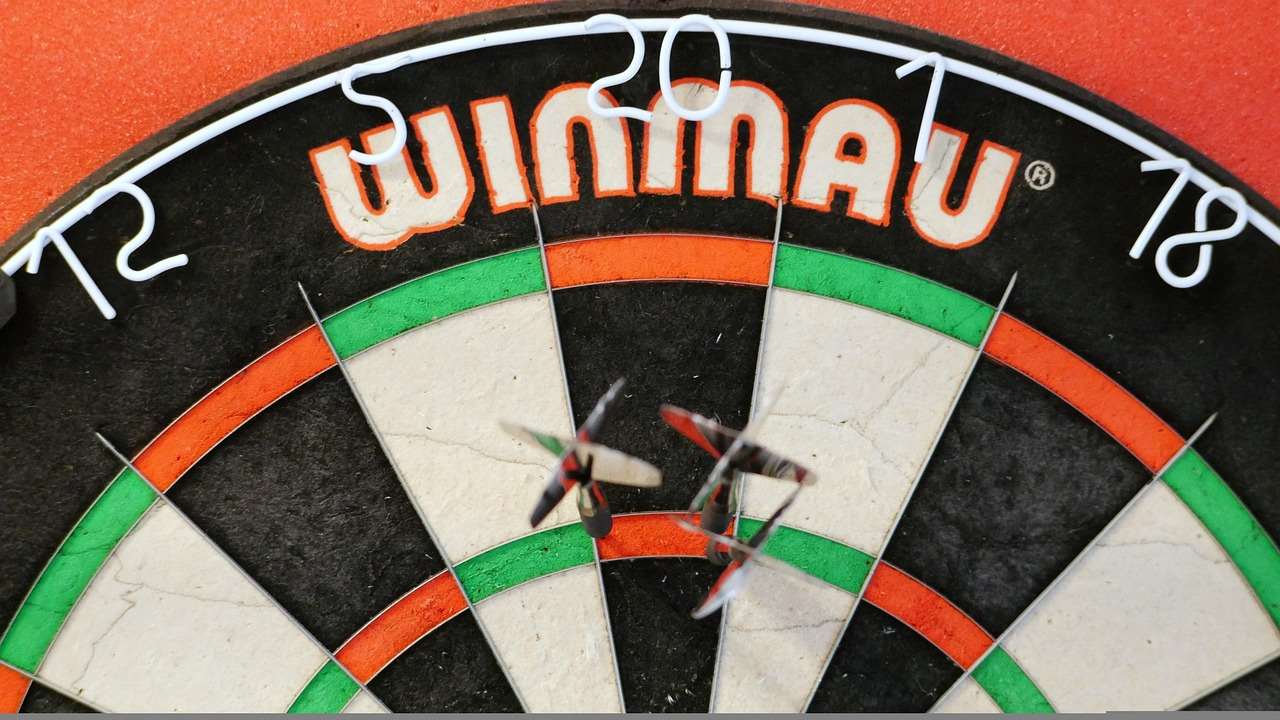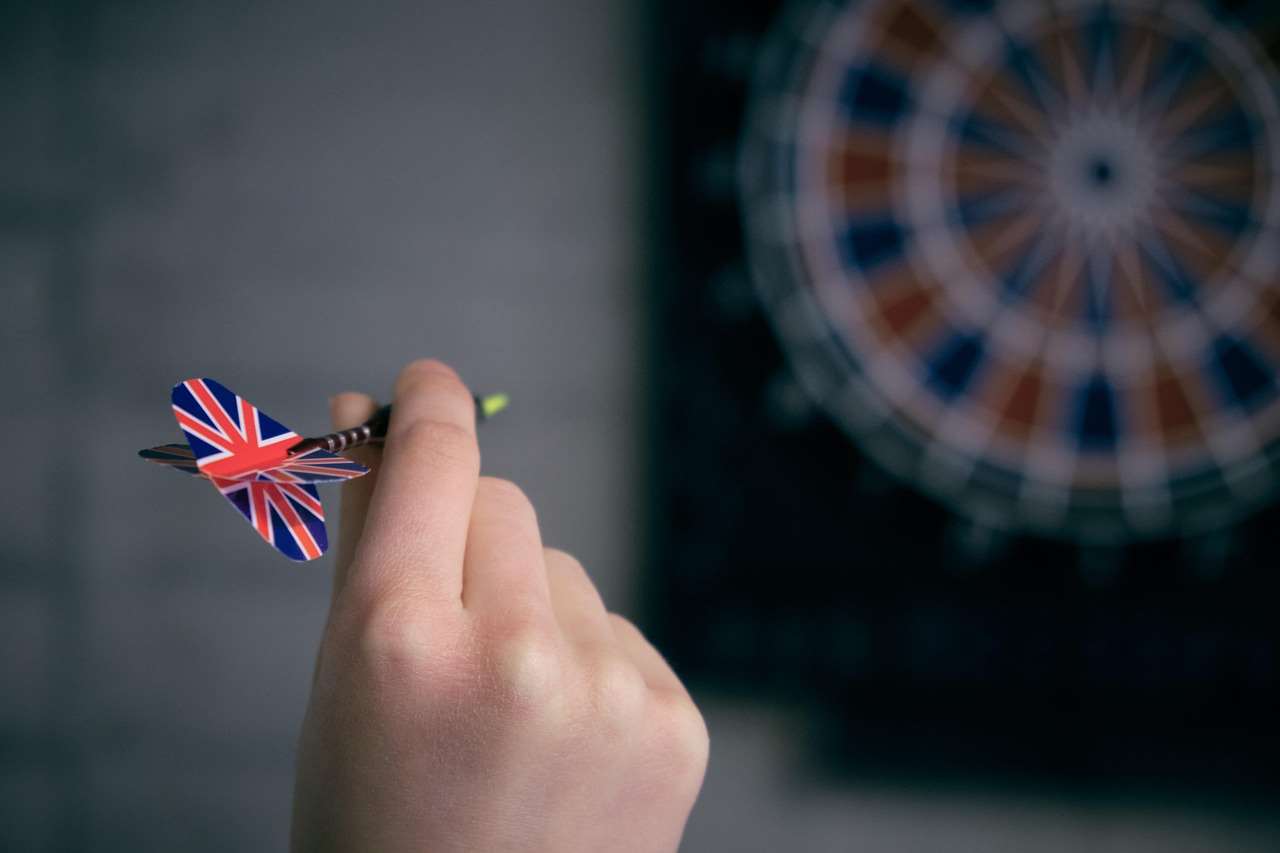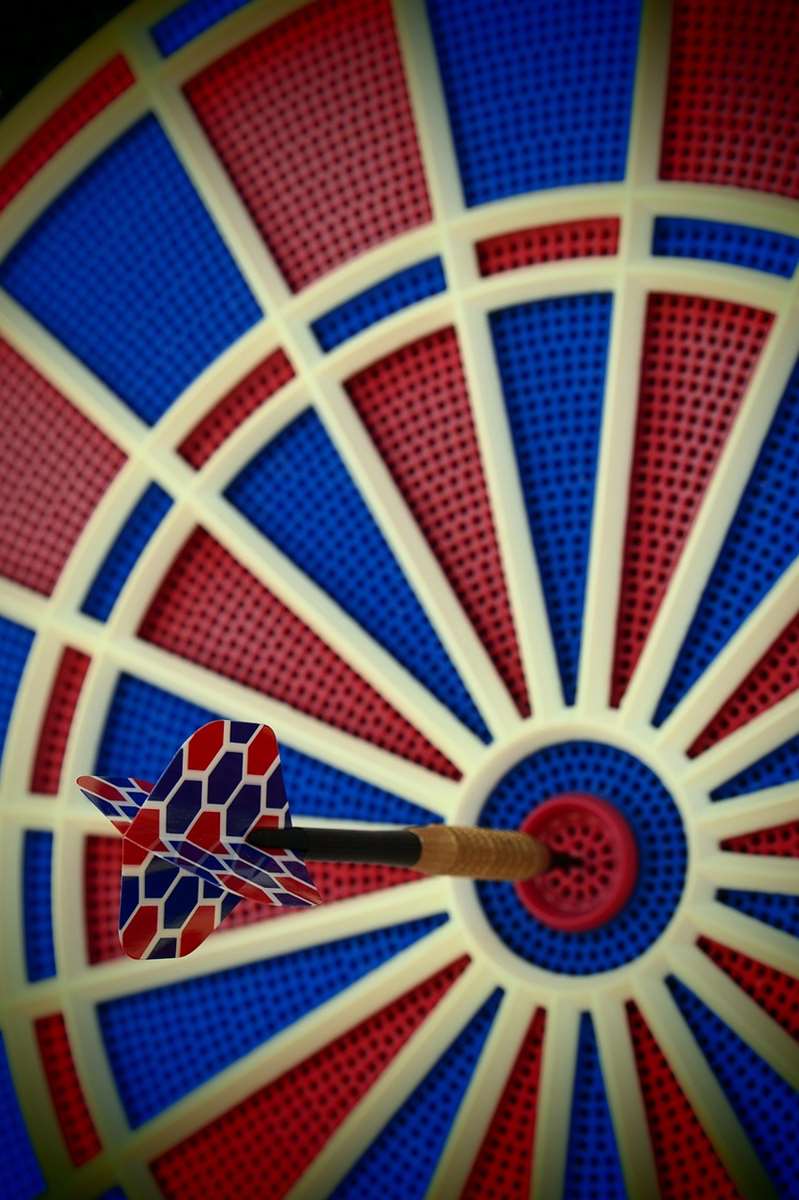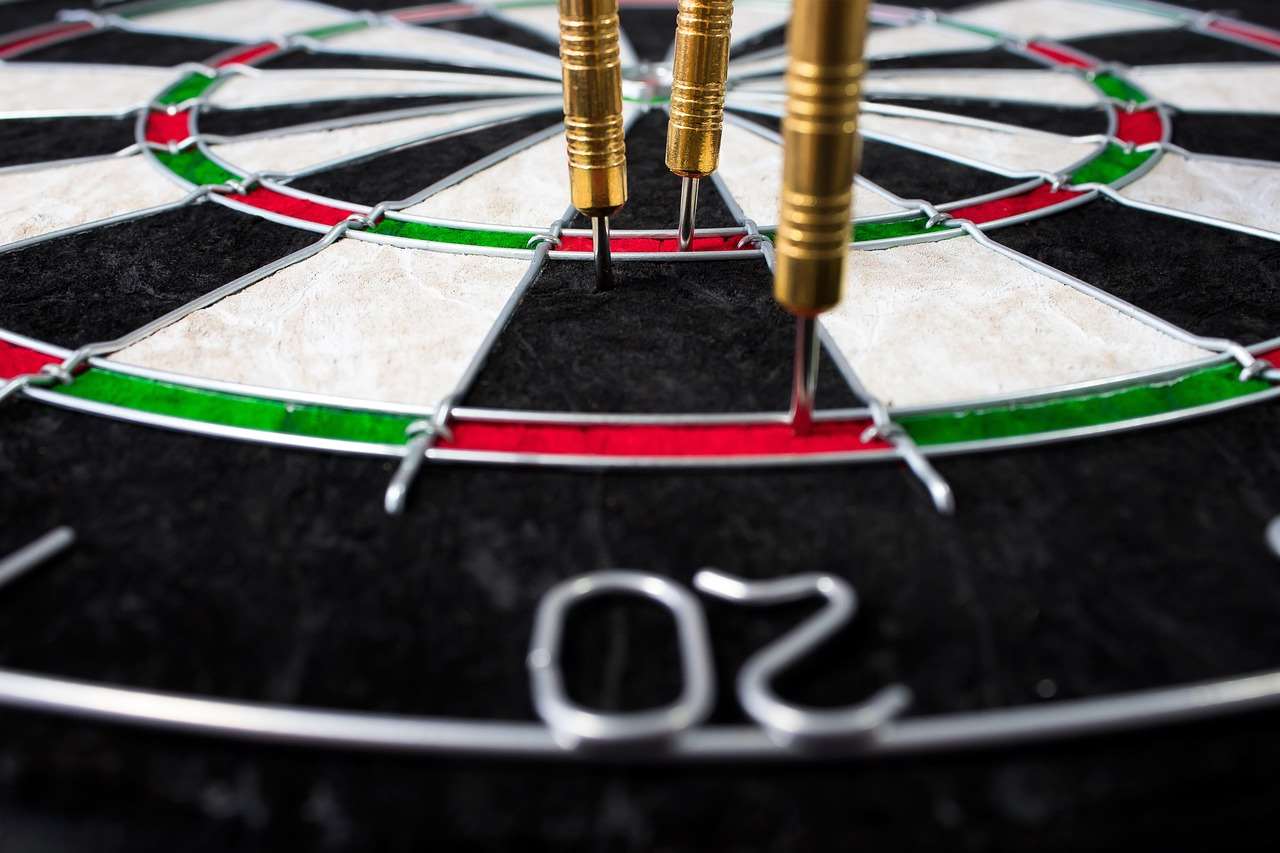Understanding the oche darts strand is fundamental for any serious darts player, as it dictates the legal throwing distance. This article will delve into the specifics of the oche, its regulations, and how to ensure your setup meets the standards, ultimately helping you improve your game.
⚠️ Still Using Pen & Paper (or a Chalkboard)?! ⚠️
Step into the future! The Dart Counter App handles all the scoring, suggests checkouts, and tracks your stats automatically. It's easier than you think!
Try the Smart Dart Counter App FREE!Ready for an upgrade? Click above!
Understanding the Oche: The Darts Throwing Line
The oche (pronounced “ockey”) is the line behind which a darts player must stand when throwing. It’s a crucial part of the game’s regulations and ensures fair play. Without a properly defined oche darts strand, the throwing distance becomes arbitrary, and the game loses its structured nature. The term “oche” itself is thought to have originated from the Dutch word for “notch” or “nick,” possibly referring to the original marking method for the throwing line.
Beyond just being a line, the oche is a clearly defined area, typically marked by a raised surface or a distinct visual cue, such as a painted line or a strip of material. This ensures that players are consistently throwing from the correct distance. A proper setup using darts steel points is also important, as this impacts where the dart lands. It’s more than just knowing where to stand; it’s about precision and consistency.

Official Oche Darts Strand Measurements
Adhering to the official measurements for the oche darts strand is essential for both casual and competitive play. The accepted measurements are standardized to ensure fair competition. These measurements are not arbitrary; they have been carefully determined over time to provide a balance between challenge and accessibility.
Distance from the Dartboard
The crucial measurement is the distance from the front of the dartboard (the face where the dart hits) to the face of the oche darts strand. This distance is 7 feet 9 1/4 inches (2.37 meters). This is the horizontal distance, measured parallel to the floor.
Height of the Dartboard
Equally important is the height of the dartboard. The center of the bullseye must be 5 feet 8 inches (1.73 meters) from the floor. This height ensures a consistent angle of play for all players, regardless of their height. If the height is incorrect, it will alter the angle of throw and affect accuracy. You can find more information about practice using a darts counter video to help you improve your consistency.
Checking Your Setup
It’s vital to regularly check these measurements, especially if you’re setting up a dartboard in a new location or playing in an unfamiliar venue. A simple measuring tape is all you need. Ensure the tape is held taut and measure from the center of the bullseye to the oche darts strand, and then check the height of the bullseye from the floor.
Materials and Construction of the Oche Darts Strand
The oche darts strand doesn’t need to be elaborate, but it should be clearly defined and safe. A variety of materials can be used, depending on the setting and personal preference.
Common Materials
- Raised Oche: A raised wooden or metal strip is a popular choice, as it provides a tactile and visual cue.
- Painted Line: A simple painted line is sufficient for casual play, but it should be clearly visible and regularly repainted to maintain its definition.
- Adhesive Strip: Pre-made adhesive strips are easy to install and provide a non-slip surface.
- Carpet or Rubber Mat: A section of contrasting carpet or a rubber mat can also serve as the oche darts strand, providing both definition and cushioning.
Important Considerations
Regardless of the material used, the oche darts strand should be stable and non-slip to prevent accidents. It’s also important to ensure that the surface behind the oche is also non-slip, as players may step back slightly during their throw. Furthermore, make sure it’s clearly marked to avoid disputes during play. Considering darts for bedroom setup? Make sure to have adequate space and a clearly defined oche.

Rules and Regulations Regarding the Oche Darts Strand
The rules governing the oche darts strand are straightforward, but important to follow. They are designed to ensure fair play and prevent any advantage from being gained by standing too close to the dartboard.
Foot Placement
Players must stand behind the oche darts strand when throwing. They are allowed to lean forward, but no part of their feet may cross the line. Some players develop a technique where they touch the oche line with their toe, but that is all that is permitted. Stepping over the line results in the throw being deemed illegal, and the score for that throw will not count.
Maintaining Contact
At least part of the player’s foot must remain in contact with the floor while throwing. This prevents players from jumping or moving their feet excessively during their throw. This rule is enforced to maintain stability and prevent any potential advantage gained from altering the throwing position dramatically.
Enforcement
In casual games, enforcement of these rules is typically based on honesty and mutual agreement. However, in competitive matches, a referee or tournament official will be responsible for ensuring that players adhere to the rules regarding the oche darts strand.
Strategies for Optimizing Your Throwing Stance at the Oche Darts Strand
Your stance at the oche darts strand is a critical component of your throwing technique. Experimenting with different stances can help you find the one that provides the most stability, comfort, and accuracy. Some people even listen to a checkout der darts podcast for tips.
Finding Your Ideal Stance
- Front-facing stance: Standing directly facing the dartboard can provide a clear line of sight, but it may not be the most stable position.
- Side-on stance: A side-on stance can offer more stability, but it may require more rotation of the torso during the throw.
- Angled stance: An angled stance, somewhere between front-facing and side-on, is a popular choice as it offers a balance of stability and visibility.
Weight Distribution
Pay attention to your weight distribution. Most players find that shifting their weight slightly forward onto their leading foot provides more stability and control. Avoid leaning too far forward, as this can throw off your balance. Consider using a practice darts app with scoring to track your progress and identify the stance that yields the highest scores.
Practice and Consistency
Once you’ve found a stance that feels comfortable and stable, practice it consistently. Muscle memory is crucial in darts, and consistent practice will help you develop a reliable throwing motion. Consider recording a dart stream single of yourself to review and refine your technique.

The Psychology of the Oche Darts Strand
The oche darts strand is more than just a physical line; it’s also a psychological boundary. Stepping up to the oche can be a moment of focus and concentration, a transition from casual conversation to intense competition. The oche becomes your stage, your moment to perform.
Building Confidence
Developing a consistent pre-throw routine at the oche darts strand can help build confidence and reduce anxiety. This routine might involve taking a deep breath, visualizing the target, or performing a specific movement. The goal is to create a sense of control and predictability, even in high-pressure situations.
Dealing with Pressure
Learning to manage pressure at the oche is a key skill for any competitive darts player. Remember to focus on your technique, trust your training, and avoid getting caught up in the emotions of the moment. It is possible to follow the darts live uitslagen of your performance, and learn from previous experiences. Don’t let external factors distract you from your game.
Troubleshooting Common Oche Darts Strand Issues
Even with careful setup and practice, you might encounter some common issues related to the oche darts strand. Here are some tips for troubleshooting these problems:
Inconsistent Throwing Distance
If you find your throwing distance is inconsistent, double-check the oche measurements and ensure that the surface is stable and non-slip. Also, pay attention to your foot placement and ensure you are consistently standing in the same position behind the line.
Slipping or Sliding
If you are slipping or sliding at the oche darts strand, consider using a non-slip mat or applying grip tape to the floor. Ensure that your shoes have good traction as well. Safety is paramount, so address any slipping hazards immediately.
Visual Obstructions
Make sure there are no visual obstructions that might interfere with your line of sight to the dartboard. This could include furniture, lighting fixtures, or other players standing too close to the throwing area. A clear and unobstructed view is essential for accurate throwing. Some people even think about darts the artist when perfecting their stance.

Advanced Techniques and Variations Around the Oche Darts Strand
While the basic rules governing the oche darts strand are straightforward, some advanced players incorporate subtle variations and techniques to enhance their game.
Subtle Adjustments
Some players make subtle adjustments to their stance or foot placement depending on the specific target they are aiming for. For example, they might shift their weight slightly to the left or right to improve their alignment with the treble 20 or other segments of the dartboard. However, these adjustments should be minimal and should not compromise stability.
Visualisation Techniques
Advanced players often use visualisation techniques to mentally rehearse their throws before stepping up to the oche darts strand. They might imagine the trajectory of the dart, the feel of the release, and the sound of the dart hitting the target. This mental preparation can help build confidence and improve accuracy.
Mind Games
In competitive matches, some players engage in mind games at the oche darts strand in an attempt to distract their opponents. This might involve subtle gestures, comments, or changes in rhythm. However, it’s important to remember that fair play and sportsmanship should always be prioritized.
Maintaining Your Oche Darts Strand for Optimal Performance
Proper maintenance of your oche darts strand is crucial for ensuring consistent and reliable play. Regular cleaning and inspection can help prevent accidents and maintain the integrity of the throwing area. It is also advisable to consider bullshooter dart board if you are looking for an electronic version.
Cleaning and Inspection
Regularly clean the area around the oche darts strand to remove dust, dirt, and debris. This will help prevent slipping and ensure a clear line of sight. Inspect the oche itself for any signs of wear or damage. Repair or replace it as needed to maintain its stability and definition.
Lighting
Ensure that the lighting around the oche darts strand is adequate and evenly distributed. Poor lighting can make it difficult to see the dartboard clearly and can negatively impact your accuracy. Consider adding additional lighting if necessary to improve visibility. If playing a game in Treble Darts Oldham you will find high quality lighting.

Conclusion: Mastering the Oche Darts Strand for Success
The oche darts strand is more than just a line on the floor; it’s a fundamental element of the game of darts. Understanding its measurements, rules, and psychological significance is crucial for any serious player. By mastering your stance, developing a consistent pre-throw routine, and maintaining the integrity of the throwing area, you can significantly improve your accuracy and consistency.
So, take the time to properly set up and maintain your oche darts strand. Experiment with different stances and techniques to find what works best for you. Remember that practice and consistency are key. With dedication and attention to detail, you can master the oche darts strand and take your darts game to the next level.
Now, go out there, set up your board, and practice! Visit Practice darts app with scoring to start tracking your progress and refining your technique today.
Hi, I’m Dieter, and I created Dartcounter (Dartcounterapp.com). My motivation wasn’t being a darts expert – quite the opposite! When I first started playing, I loved the game but found keeping accurate scores and tracking stats difficult and distracting.
I figured I couldn’t be the only one struggling with this. So, I decided to build a solution: an easy-to-use application that everyone, no matter their experience level, could use to manage scoring effortlessly.
My goal for Dartcounter was simple: let the app handle the numbers – the scoring, the averages, the stats, even checkout suggestions – so players could focus purely on their throw and enjoying the game. It began as a way to solve my own beginner’s problem, and I’m thrilled it has grown into a helpful tool for the wider darts community.